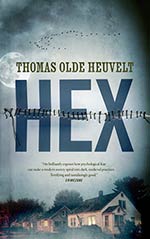
![]() charlesdee
charlesdee
10/9/2016
![]()
Heuvelt's translated short fiction has won Hugo and World Fantasy awards, and the Dutch edition of this novel was a bestseller. For the American edition, Heuvelt chose to recast the story in an American setting, creating the small Upstate New York town of Black Spring, near West Point for his cursed village. I can't compare this to the Dutch original, but the transition seems to work. America certainly has as rich a tradition of seventeenth century witch lore as Holland, and the cast of small town types Heuvelt deploys would probably have their Dutch equivalents. If you can buy into his premise--that a witch executed hundreds of years in the past has cursed a town so that residents who attempt to leave it commit suicide--you can roll with his inventive developments on the theme.
Townspeople now use 21st technology to monitor their witch's whereabouts and protect their secret, but of course tensions are growing among young people who want to find a way out of the grotesque but deadly situation. Although such tensions must have existed every generation, this crop of youngsters will push things too far and set in motion violent and shocking developments. The witch will be implacable with her revenge, and the townspeople will degenerate into a mob worthy of witch hunters throughout history.
Heuvelt knows how to space his shockers and his creepy moments. He gives us a range of characters to respect, care about, and despise; and, they behave in ways we observe with growing concern. He builds to a horrific, violent conclusion, which is apparently very different from the original edition. Many reviewers complain that the American edition ends poorly, but lacking the comparison I though the final passages made up for the lapses into lazy writing and cliché that crop up in his almost 400-page novel.